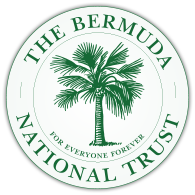The definitive book on Bermudian furniture and silver is Bryden B Hyde’s Bermuda’s Antique Furniture & Silver, published in 1971 by the newly formed Bermuda National Trust. In the earliest days, furniture was made of the indigenous Bermuda cedar, in styles influenced by English, Spanish and American craftsmen. Hyde described the wood’s virtues for cabinetry: “Cedar resists moth, cockroach, cricket, termite and mildew. It is strong and springy, does not warp, is easily worked, turned, carved, and finishes a red colour which fades to honey in sunlight. Its sweet smell is retained for centuries.”
Hyde believed that the best cedar furniture was made between 1612 and 1750, after which mahogany came into fashion, and considered that the cedar chest-on-frame was the most characteristic of all Bermuda-made furniture. The most Bermudian feature of these chests was the elaborate chest-front dovetailing.
